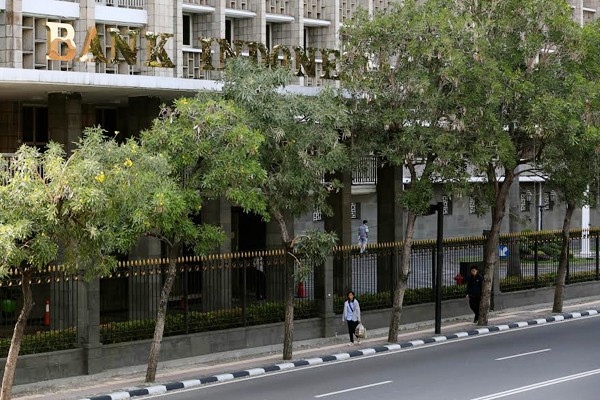Popular Reads
Top Results
Can't find what you're looking for?
View all search resultsPopular Reads
Top Results
Can't find what you're looking for?
View all search resultsHigher foreign reserves expected to fend off global risks
Bank Indonesia (BI) reported on Tuesday that the amount of foreign reserves reached US$119.9 billion in February, equal to eight-and-a-half months of imports and the government’s foreign debt payments.
Change text size
Gift Premium Articles
to Anyone
I
nflows into Indonesia pushing foreign reserves higher are expected to help Indonesia fend off risks stemming from global economic uncertainty.
Bank Indonesia (BI) reported on Tuesday that the amount of foreign reserves reached US$119.9 billion in February, equal to eight-and-a-half months of imports and the government’s foreign debt payments.
The February figure was higher than the $116.9 billion seen in January.
The increase in foreign reserves was mainly driven by inflows of foreign currencies, particularly tax revenues and export proceeds from oil and gas, withdrawal of the government’s foreign loans and the proceeds of BI’s foreign exchange securities (SBBI) auctions.
The central bank claims the foreign reserves have reached a “very safe” level, attributing the figure to its improved currency management compared to two years ago.
“Our volatility is highly controlled if we compare it to our peers,” BI deputy director for economic and monetary policy Riza Tyas said.
BI’s calculations also show that the market has priced in the fear of outflows that could be triggered by the upcoming United States Federal Reserve’s (Fed) rate hike this month.
Economists say BI has improved its ability to control currency volatility and has become more prudent in its management of foreign reserves, which has resulted in a more stable rupiah of late at about Rp 13,300 per US dollar.
The current foreign reserves level is quite strong compared to the levels in other emerging market countries, thanks to the repatriated funds under the government’s flagship tax amnesty, inflows of domestic portfolio investments and improved global commodity prices, said Bank Central Asia (BCA) chief economist David Sumual.
At present, foreign reserves are far higher than during the “taper tantrum” period two years ago when global markets turned chaotic following the Fed’s decision to reduce its bond purchases.
Back then, Indonesia had less than $90 billion in foreign reserves, below the “psychological” level of $100 billion.
“Now, foreign reserves have returned gradually to the levels seen in 2013 when commodity prices were booming,” he said, adding that the trend of rising inflows had begun at the end of last year.
The higher foreign reserves can create a buffer during temporary shocks in the foreign exchange (FX) market, which could be caused by possible capital outflows when the Fed goes ahead with its rate hike plan.
BI already has a lot of extra ammunition to manage volatility, including agreements with South Korea, China and Japan.
Bank Mandiri chief economist Anton Gunawan said the central bank would certainly conduct interventions in both FX and sovereign bond secondary markets when currency volatility became tougher.
The government will most likely order state-owned enterprises (SOEs) to buy back their stocks as well.
Meanwhile, the central bank hopes that the downside effects of currency volatility on the economy can be reduced through the implementation of a foreign debt regulation that came into effect on Jan. 1.
The regulation requires nonbank companies to hedge their FX exposure by 25 percent at domestic banks, have a minimum of 70 percent in their liquidity ratio — a measurement of their FX assets and liabilities — and obtain a “BB minus” rating from either domestic or international ratings agencies before they can look for offshore borrowings.
“Private companies’ foreign debt mismanagement was one of the triggers of the monetary crises in 1997 and 1998,” BI executive director for monetary and economic policy Dody Budi Waluyo said.
According to data from BI, 94.7 percent of 2,700 non-bank companies with foreign debts already comply with the hedging and liquidity ratio requirements.
Meanwhile, only 132 of the 538 companies that are required to undergo a ratings assessment have fulfilled this requirement.
“Now, foreign reserves have returned gradually to the levels seen in 2013 when commodity prices were booming.”










